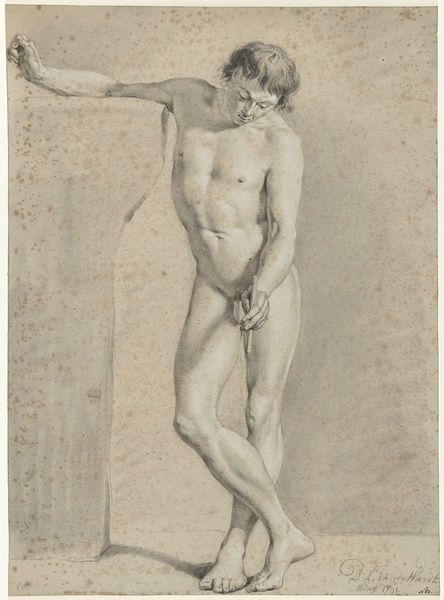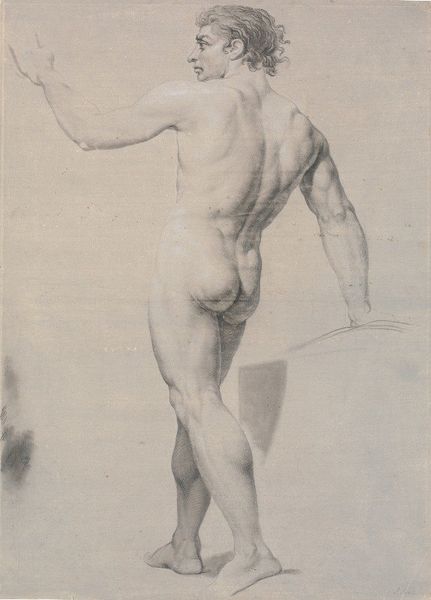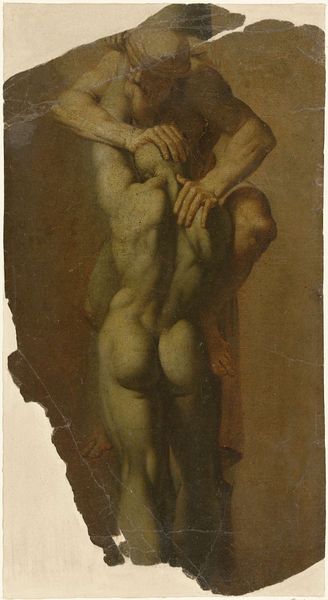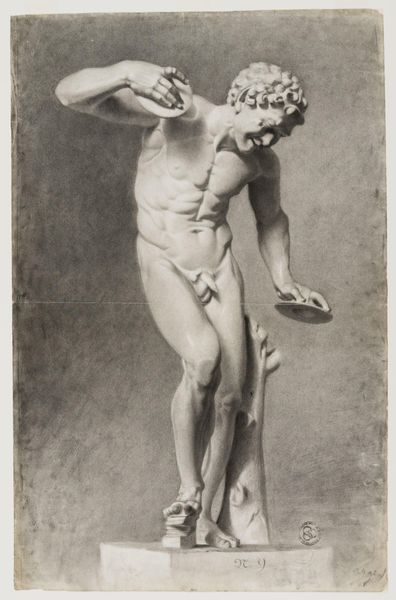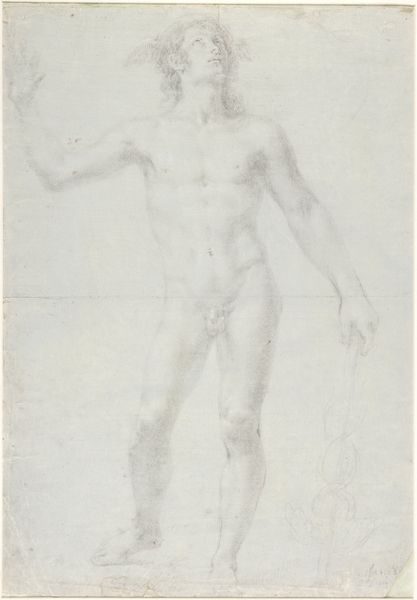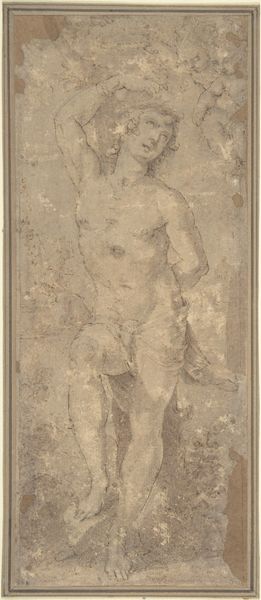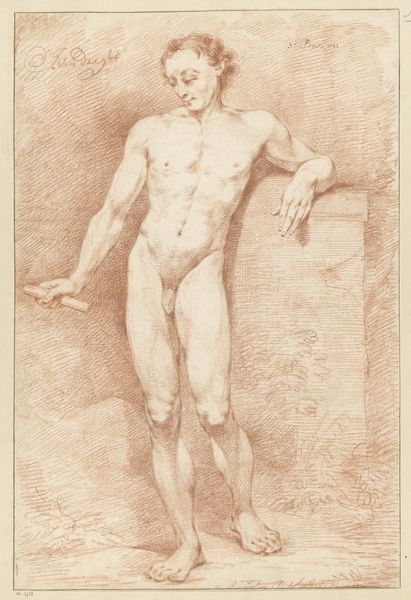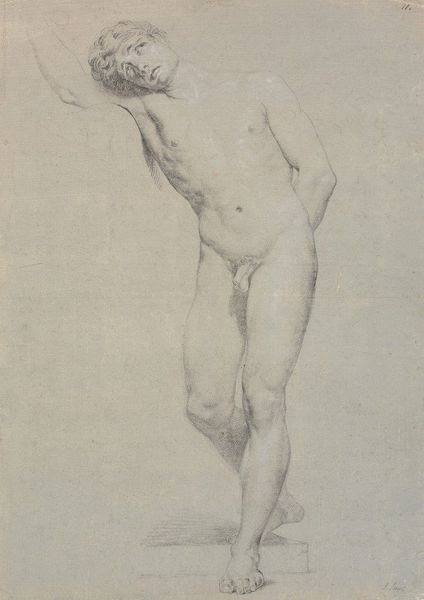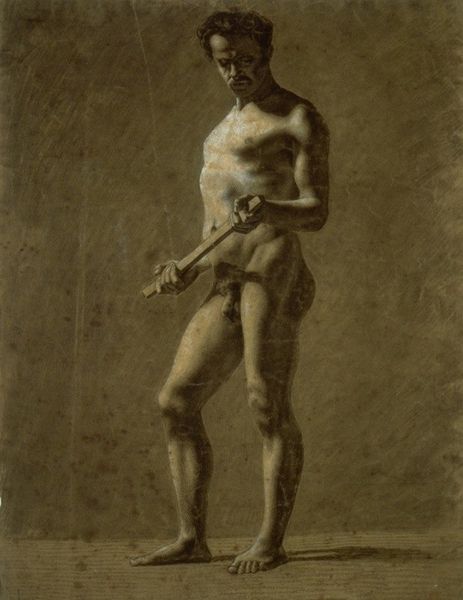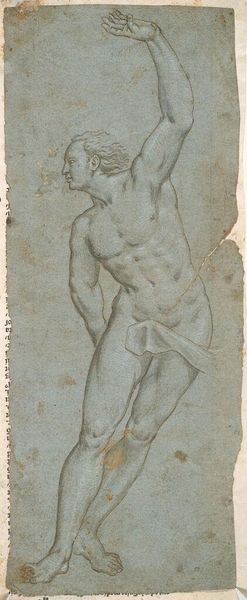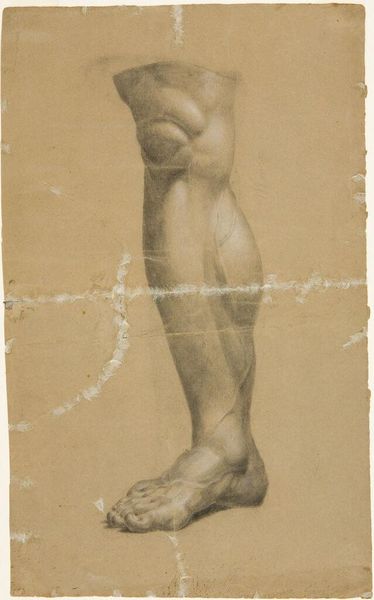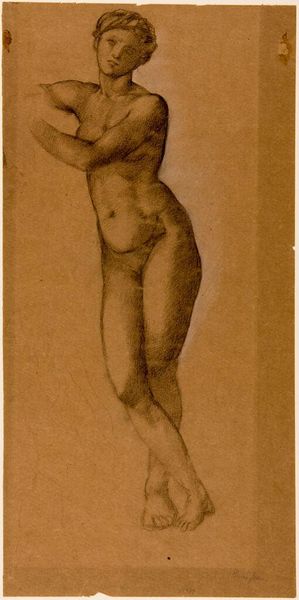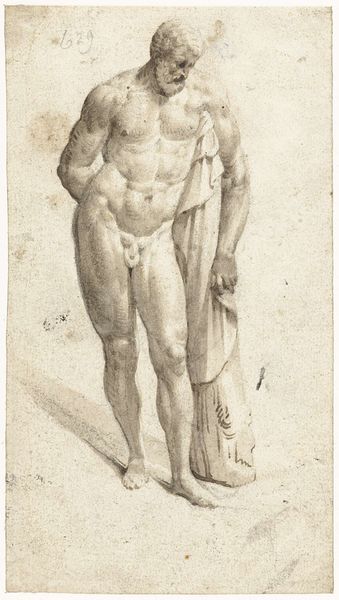
drawing, paper, pencil, chalk, charcoal, black-chalk
#
portrait
#
drawing
#
charcoal drawing
#
figuration
#
paper
#
11_renaissance
#
pastel chalk drawing
#
pencil
#
chalk
#
water
#
painting painterly
#
watercolour bleed
#
charcoal
#
charcoal
#
italian-renaissance
#
nude
#
black-chalk
Dimensions: 335 × 219 mm
Copyright: Public Domain
Editor: Here we have Michelangelo’s "Bacchus," a drawing on paper from the Renaissance. It’s powerful, but it feels unfinished, almost like a ghost. What stands out to you most about this work? Curator: I see a reflection of the complex social and intellectual currents of the Renaissance. The revival of classical ideals is evident in the subject matter – Bacchus, the Roman god of wine and revelry. But, look closer, Michelangelo isn't simply copying a classical prototype. Editor: What do you mean? Curator: The figure is powerful, yes, but there's also a sense of vulnerability, even melancholy. This reflects a broader questioning of ideals that characterized the era. Consider where this drawing may have been viewed: by a select, educated audience within the context of a humanist court, shaping its reception and interpretation. Editor: So, it’s not just about admiring the physique? Curator: Absolutely not. It’s about the complex interplay between classical inspiration, the artist's own vision, and the expectations of his patrons and society. Ask yourself how access to classical sculpture and texts was controlled, shaping how artists and audiences alike understood these ancient figures. The choice of drawing, a medium often associated with preparatory sketches, further emphasizes the ongoing artistic process and the unfinished nature of cultural ideals themselves. What does that incompleteness suggest to you? Editor: It feels like he's suggesting that ideals are always evolving. That even the great masters were in constant dialogue with their materials and the world around them. Thanks, that helps a lot! Curator: Precisely. Remember, art is never created in a vacuum; it's a product of its time and place, constantly reshaped by social, cultural, and political forces. Looking at a piece like this makes one wonder about the Renaissance ideals as we have come to understand them.
Comments
No comments
Be the first to comment and join the conversation on the ultimate creative platform.

